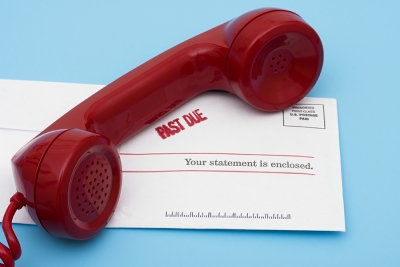We’ve all heard talk about “good credit” or “bad credit” but just what does this mean?
Why is it so important to have good credit?
And if you do have bad credit, how do you go about turning that situation round?
The notion of having poor credit can seem like a personal demon you can’t escape. But relax, it’s easy to understand and, what’s more, it’s a problem that’s fixable.
It’ll take some work, research, and application. But with those three things, you’ll be able to increase your credit score and be on your way to a stable financial situation.
So, what is a good credit score anyway?
Credit scores are measured on a scale of 300-850. With 300 being the lowest score and 850 the credit score of a hedge fund manager.
Typically, most lenders would regard a score of over 700 as “good,” with scores over 750 being “excellent.”
To put this in perspective, depending on which of the two major models you use (Vantage or FICO), the average credit score in the US is 670 or 695. Either way, it’s a little short of what lenders would regard as being “good.”
So the first thing to remember, if you’re in the below 700 bracket, is that you’re not alone. The majority of people are in the same boat as you. The second thing to remember is that there are things you can do about it.
So why’s it so important to have a good one?
People with good credit scores enjoy a wide range of benefits. Lenders view people with good credit with a less suspicion than those with bad. Any form of financing, be it a loan, a mortgage, or a credit card will be easier to get with a good credit score.
Not only is it easier to find someone willing to lend you money, but the terms on which you can borrow are generally better. Interest rates will be lower, as will charges. This is because lenders see you as less of a risk. They don’t need to cover themselves in case of default as comprehensively as they would in the case of someone with bad credit.
These aren’t the only benefits of having a good credit score. It can be easier to find work as some employers will check your credit history. It’ll be easier to find a place to rent because landlords will be suspicious of those with less than stellar credit. And even easier to get your utilities hooked up; utility companies also will check your credit, they’ve been stung by people not paying before.
Life is simply easier with a good credit score behind you, so it follows that a poor score can have a negative impact on your life.
What sort of negative impact?
Not only is it harder to borrow money or get credit with a poor credit score, when you are able to get money, you’re often borrowing it on far harder terms, and at higher interest rates. Bad credit has the inverse effects of good when you’re trying to get financing.
There is a narrower range of options. This is not to say they don’t exist. There are plenty of providers for those with bad credit, but the range is smaller than for those with good, it’s not as easy to pick and choose.
Secondly, those willing to lend to those with bad credit need to insure themselves against the possibility of default. They do this by making it more expensive to borrow, in the form of higher interest rates. This is across the board, be it a personal loan, credit card, auto loan, or even a mortgage.
Needless to say, if you’re borrowing money at a higher interest rate, it will be more expensive over the life of the loan. As lots of financing is taken out over long periods, even a small difference in interest rates can make a large difference in repayment.
Let’s take the example of a $20,000 auto loan:
If you have good credit….
You get an interest rate of 2.69%
You get a repayment period of 60 months.
Your monthly payment is $357.
The total repayment is $21,420.
If you have average credit…
You get an interest rate of 3.19%
You get a repayment period of 60 months.
Your monthly payment is $361.
The total repayment is $21,600.
Even just the difference of a few points in your credit score will cost you money. In this case, it’s only $240 of the course of the loan. But that’s with a relatively small difference in the interest rate.
Differences in mortgage rates can be as much as one and a half percent... Can you imagine how much more you would pay for a house over the course of 30 years?
Obviously it’s in your best interest to bump that credit score up as high as you’re able to.
But how do you go about it?
And what can you reasonably expect to achieve in six months?
How much can I improve it by in six months?
The important thing here is to be realistic. Credit scores are calculated from a variety of factors, and not all of them can be dealt with overnight. But with a sensible strategy and a bit of hard work, it’s not unrealistic to think you can improve your score by 50 points in a six month period.
If your score is in the average range, this would push it up to being “good.” 100 points is possible, but a lot of things have to go right for that to happen.
Set a realistic goal.
Then go about tackling it.
But keep in mind that just tackling your credit score in the short term won’t necessarily translate into long term benefits. You need to keep at it and change your financial habits. If you slip back into your old ways, it’ll just go back down again.
This isn’t a short-term fix, it’s a long-term overhaul.
And how do I do that?
The first thing to do to take control of the situation is to pull your credit report. You are legally entitled to get this free once per year. Go through it in detail, examine it.
One of the quickest ways to give your credit score a boost is to root out anything on your credit report that shouldn’t be there.
Don’t assume that your credit report is right. Credit agencies can make mistakes just like anybody else, and there could be errors lurking on your credit report that are bringing your overall score down.
What am I looking for?
You need to check that all the balances on there are correct. The debts you have account for 30% of your overall credit score. So you need to be sure that the totals on your credit report are the right ones. If they’re too high, you need to challenge them.
Look for any other inaccuracies in the report, are there late payments that you actually made on time? Late payments can be a significant drag factor on a credit score. It’s entirely possible that maybe you made a payment and your payee didn’t log it in time.
Remember that your credit report should go back no further than seven years. If you have older missed payments or debts on there, work on getting them removed. They’re unnecessarily bringing down your score.
The important thing here is to be on top of your finances. You need to have a record of all payments, it’s not enough to rely on your lenders to keep records. You need to keep your own, that way, if there is something wrong, you have the wherewithal to challenge it and get it changed.
Lastly, make sure the credit report is in fact yours. Sounds crazy, but there are many instances of people with the same name causing confusion as to whose credit report is whose. Make sure that you’re not suffering from somebody else’s bad credit.
What do I do if the details are wrong?
There are mistakes on one in four credit reports.
So it’s important to remember that credit agencies are actually used to dealing with queries of this nature. Don’t be frightened of contacting them. You can also contact the data furnisher who provided the credit agency with your information. Typically with personal finances like credit cards, that will be the creditor themselves.
Make sure that you keep a copy of any documentation that you send if you’re doing it by mail, and send it by certified mail, requesting acknowledgment of receipt.
The point of this is to ensure that there is a paper trail. The more care and detail taken at your end, the easier it is to resolve the situation.
How long will this take?
Legally, the credit bureau and data furnishers are required to resolve the investigation within 45 days.
In reality, this process is often quicker.
You’ll receive another credit report when the investigation is concluded.
Other ways to improve
Once you’re satisfied and confident that your credit report is entirely accurate, it’s time to make changes which will make a difference to your credit score. Don’t forget that a large amount of your credit score is your payment history. This accounts for 35% of your overall score, and it’s important to show a record of regular and timely payments.
One late payment of 30 days can drop a score by 90-110 points, so it’s vital to show that you’re regularly paying off your debts.
Automate your payments so you never miss a bill. Just be sure that your bank account can handle all the withdrawals. Going six months without missing a repayment will definitely raise your credit score.
Another way to raise your score is by improving your credit utilization ratio; all the main credit agencies give it a lot of weight.
Essentially, your credit utilization ratio is how much of your credit you’re actually using.
Credit agencies like to see you only using 35% of your available credit.
So say you have a credit card with a $1000 dollar limit, they’d want you to have a balance of no more than $350 on that card. If you pay your balance before the statement is due it’ll help to bring this down.
Another way to bring this down is to ask for an increase in your credit limit. Say you have a $500 balance on that $1000 card. That’s a credit utilization ratio of 50%. Get that credit limit increased to $2000 and the credit utilization ratio suddenly drops to 25%. Check your credit limit.
Often, as card users reduce their balance, the company will lower their limit; this is known as balance chasing. Check that it’s not happening to you.
So the more credit cards I’m not using, the better, right?
This isn’t really the case. Long term, successful use of a number of credit lines is a good way to improve your credit score, but this is a strategy which takes a while to play out.
It’s important to remember that in the short term, applying for a number of credit cards can have an adverse impact on your score. So if you’re looking to raise your score in six months, this may not be the way to go.
You can, however be an authorized user on somebody else’s card. Most credit card companies will let additional users be added to someone else’s card, and you don’t have to go through the same credit checks that you would if you were applying for your own.
If you’re added to a card with a good credit history, this can give your credit score a boost.
But remember that it’s no substitute for properly building your credit over time.
Becoming an authorized user will certainly give your score a little bump, but bear in mind that lenders looking at your credit history don’t go off credit score alone, they like to see a history of responsible repayments.
So, in conclusion
Improving your credit score isn’t going to happen overnight. It’s important to be realistic about what you can achieve.
But as we’ve seen, you can do a lot to improve your score in six months. We’ve also seen that it’s really important that you should. Life gets much easier when you have a good credit score; it’s as simple as that.
The important thing is to be on top of the situation. Be diligent and do your research. Organize your finances so you know where you stand with your debts.
Understanding your credit score will go a long way towards helping you improve it.
Tidy up your debts to bring that credit utilization ration down. Make sure that there are no inaccuracies on your credit report. If there are then pursue them.
But do remember that over time there really is nothing better for a good credit score than a history of responsible repayment.
A good track record of responsibly managing your debts will eventually give you the credit score that you want.










Leave A Comment